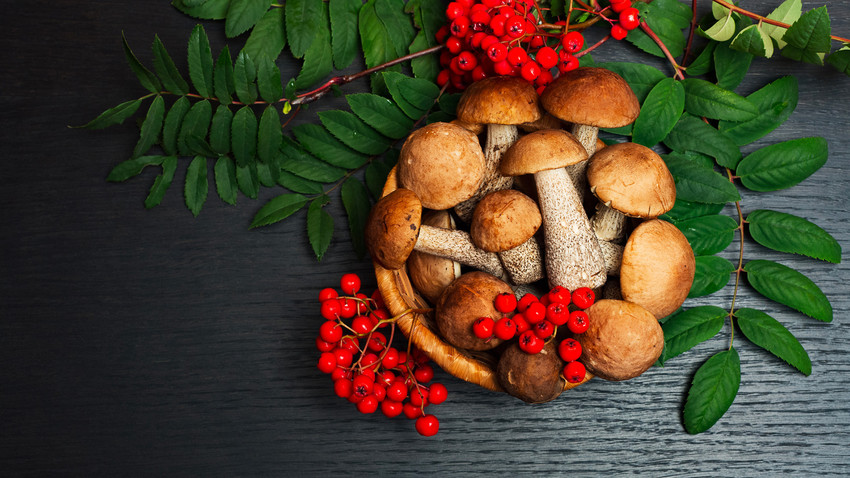
Probably the best alternative to meat and fish there is!
Legion MediaRussia's flat terrain and climatic conditions are ideal for growing mushrooms, while the long fasts required by the Orthodox Church do not extend to mushrooms. Hence, Russian cuisine abounds with mushroom recipes. We’ve picked the best specially for you!
For salting, it’s best to choose young mushrooms of the same size or chopped so that they become evenly salted. Milk mushrooms, saffron milkcaps, russula and chanterelles are suitable for salting.
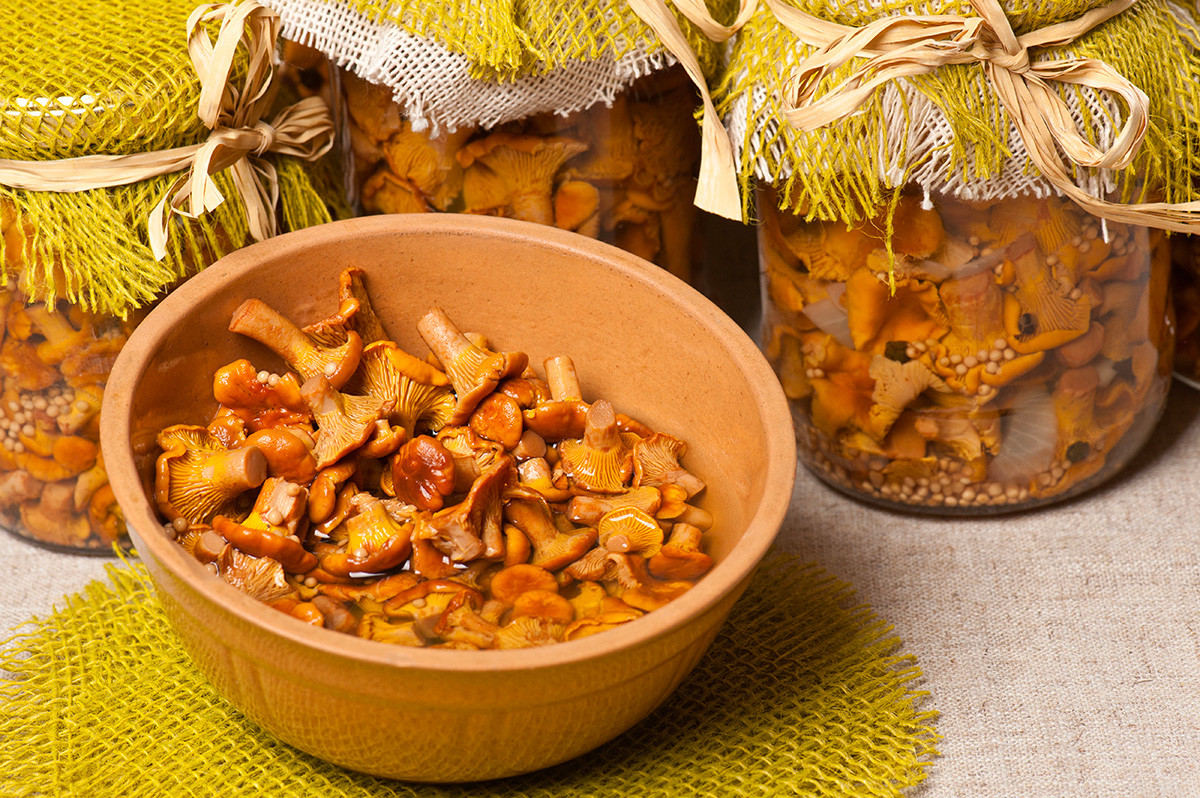
How to salt mushrooms: Peel and rinse the mushrooms thoroughly (can be soaked in cold water for 20 minutes). Take a sterilized glass container, pour in a handful of salt and add a layer of mushrooms, caps down. Cover with salt and build up more layers, each time sprinkling with salt (50 g of salt per kilogram of mushrooms). Between the layers, you can add black peppercorns, bay leaves, dill, garlic or dry cloves; horseradish leaves make for a natural antiseptic. Seal the container with a wooden lid or place a heavy plate on top, and put in the refrigerator. Check after five days and pour off the excess brine. Add boiled water if needed. Small mushrooms need to be salted for a week, medium and larger ones for 30-45 days.
Detailed recipe here
Mushrooms make a great alternative to meat and fish, which is why old cookbooks often contain vegetarian mushroom soups. For example, Valaam schi or homemade mushroom noodle soup. Most common of all is traditional mushroom soup with potatoes and vegetables. The classic broth for this is transparent and made from porcini mushrooms, cooked for 40 minutes to an hour. But if there’s no time, you can do without it.
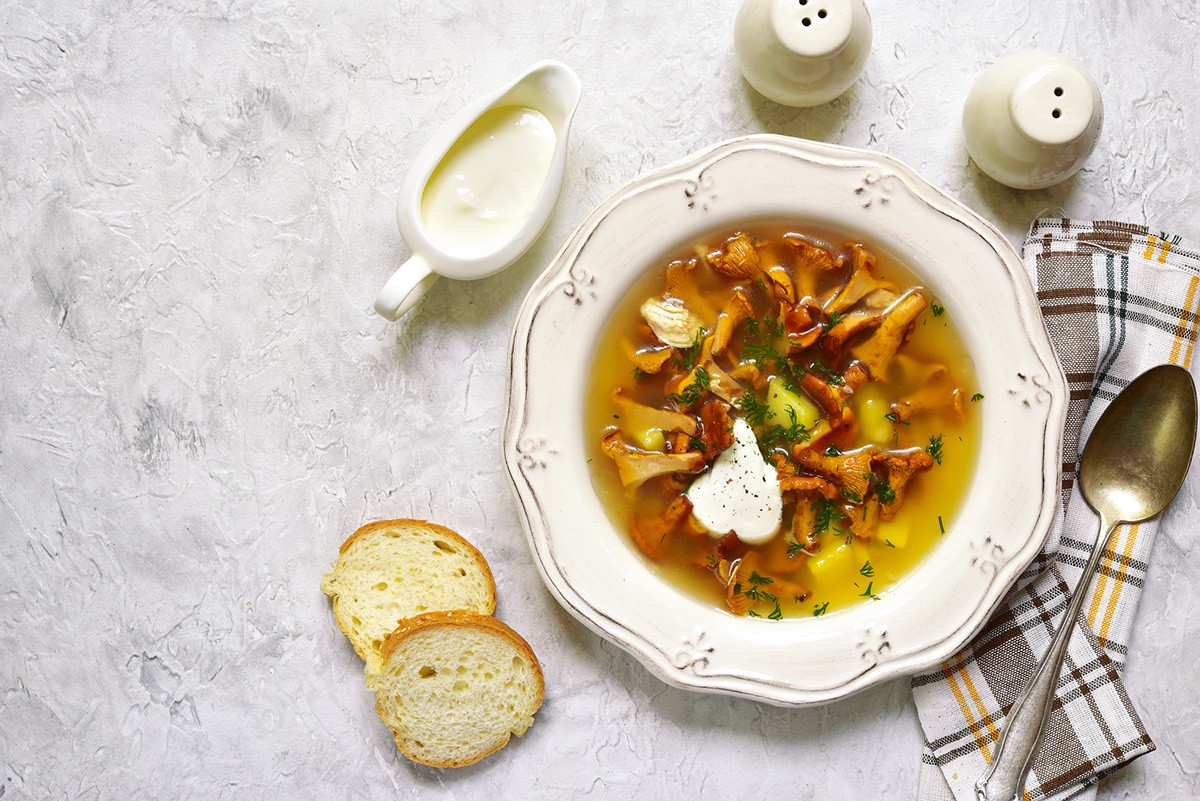
How to make mushroom soup: Fry the washed and chopped mushrooms (500 g) in vegetable oil until golden brown. Add finely chopped onion (1 pc) and fry until it turns golden. Reduce the heat and simmer for another 20-25 minutes. Season with salt to taste. Peel and cut potatoes (4 pcs), and slice peeled carrots (1 pc) into rings. Put the potatoes and carrots in a saucepan with water, boil for 15 minutes until the potatoes are cooked. Add mushrooms, onions and spices (bay leaf, pepper). Serve the soup with herbs and smetana. Ingredients for 8 servings.
Detailed recipe here
Vareniki (dumplings) can be made with a million fillings, but lightly salted ones provide the most balanced taste. Thanks to the mushrooms, there’s no hint of blandness.

How to cook vareniki with potatoes and mushrooms: For the dough, beat an egg (1 pc) with salt (1/2 tsp), add vegetable oil (1 tsp) and water (150 ml). Stir and gradually add flour (300 g). Knead the dough for at least 10 minutes until elastic, cover with plastic wrap or a towel, and leave at room temperature for 30 minutes. For the filling, rinse and chop the mushrooms (200 g, champignons will do). Fry them with finely chopped onion (1 pc) until tender. Boil potatoes (300 g) and mash. Stir the mash with the mushrooms and onions. Season with salt and butter (30 g) to taste. To shape the vareniki, cut a piece from the dough and roll it out. Use a glass to cut circles from the piece, place the filling on each circle in the center, fold and pinch the edges. Repeat. When all the dumplings are ready, boil them in salted water for 5 minutes. Serve with herbs and smetana. Ingredients for 3-4 servings.
Detailed recipe here
Pies brighten up any festive meal, while on a normal day they make for a delicious snack or addition to soup. Recipes for pies with buckwheat and mushrooms have been passed down from Russian monastery cuisine. Monks prepared the dough in cabbage or cucumber brine, which served as a natural enzyme, doing away with the need for yeast. Here’s a simplified recipe for pies that does use yeast.
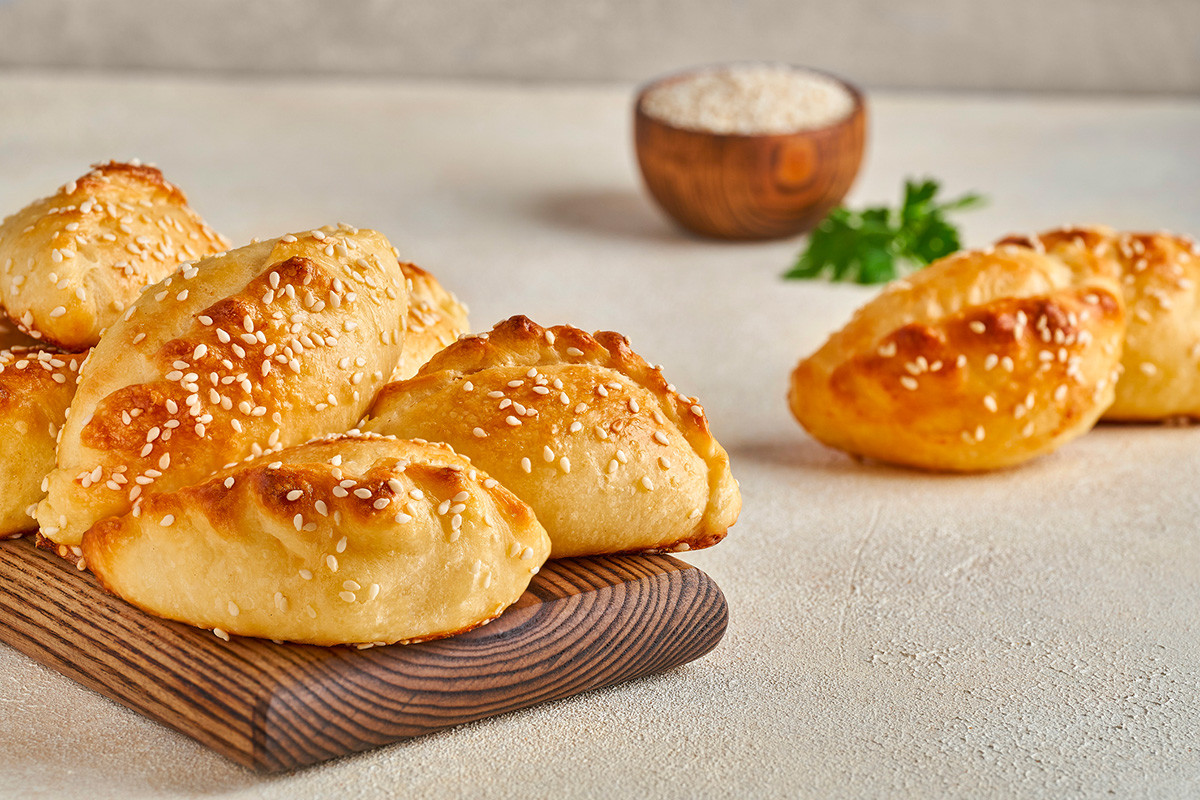
How to cook buckwheat and mushroom pies: For the dough, mix dry yeast (1 heaped tsp), sugar (1 tbsp), sifted flour (1.5 tbsp) and boiled warm water (3/4 cup). Let stand in a warm place for 20 minutes until bubbles appear. Add a pinch of salt and vegetable oil (1/4 cup) to the starter dough and sifted flour, and knead. Cover the dough with plastic wrap and let rise for 1 hour in a warm place.
For the filling, chop an onion and sauté in a frying pan. Rinse, peel and finely slice mushrooms (honey agarics or champignons), and fry with the onion. Add salt and pepper to taste. Fry until tender, stirring constantly. Boil buckwheat, combine with the mushrooms and mix.
Divide the dough into 12 parts, roll each out into a flat circle, put the filling in the middle and pinch the edges to make pies. To make the pies reddish, smear with yolk. Bake on a baking sheet lined with parchment in a preheated oven at 180°C for 25-30 minutes. Take out the pies and let stand under a towel for 5 minutes.
You can make pancakes separately and then stuff with mushrooms and onions, or you can use our fabulous recipe for Russian blini with pripek (baked filling) – similar to cooking an omelette and faster than regular stuffed pancakes.
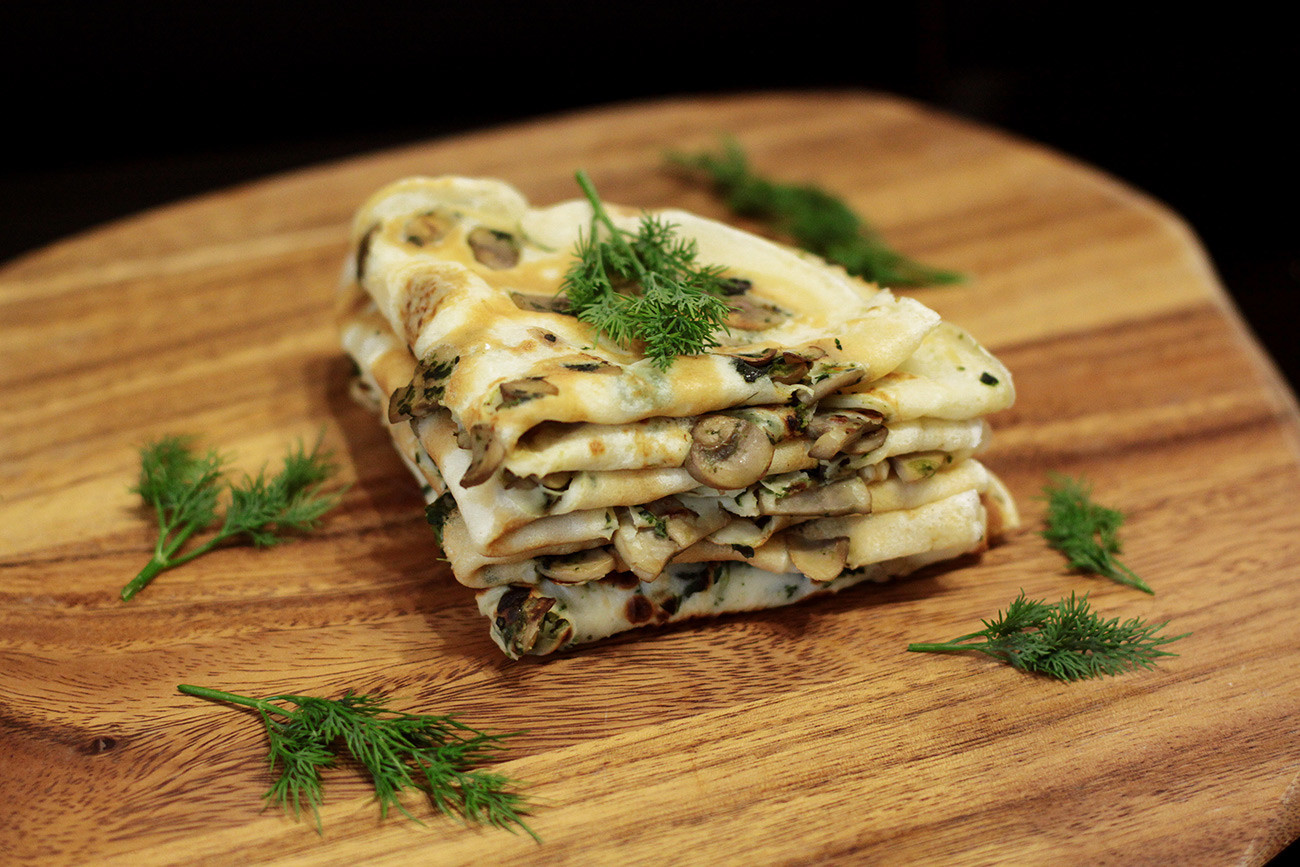
How to cook pancakes with mushrooms: For the filling, finely chop onion (1 pc) and mushrooms (300 g), fry in vegetable oil and add herbs. For the dough, beat eggs (2 pcs), add milk (300 ml), salt and sugar (0.5 tsp each), and flour (500 g). Pour in boiling water (100 ml) in a thin stream, continuing to whisk. At the end, add vegetable oil (1 tbsp) and leave for 15 minutes. Put a little of the filling in a hot frying pan, pour in a little dough (enough for 1 pancake), and fry for 1-2 minutes on each side. Repeat until no more dough is left. Serve with smetana and herbs.
Detailed recipe here
If using any of Russia Beyond's content, partly or in full, always provide an active hyperlink to the original material.
Subscribe
to our newsletter!
Get the week's best stories straight to your inbox